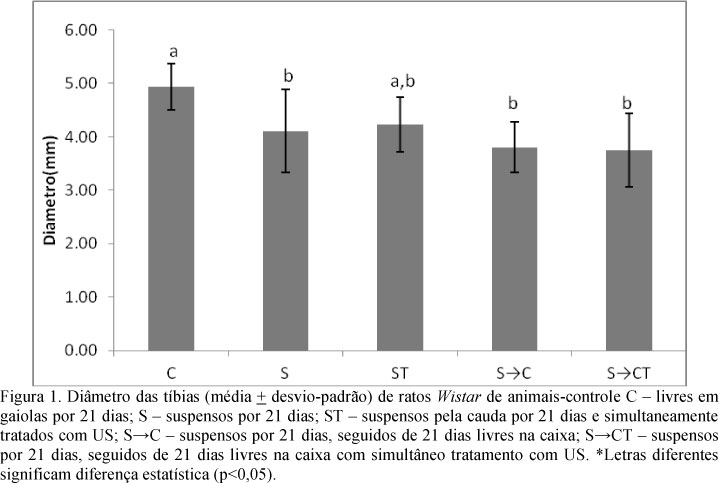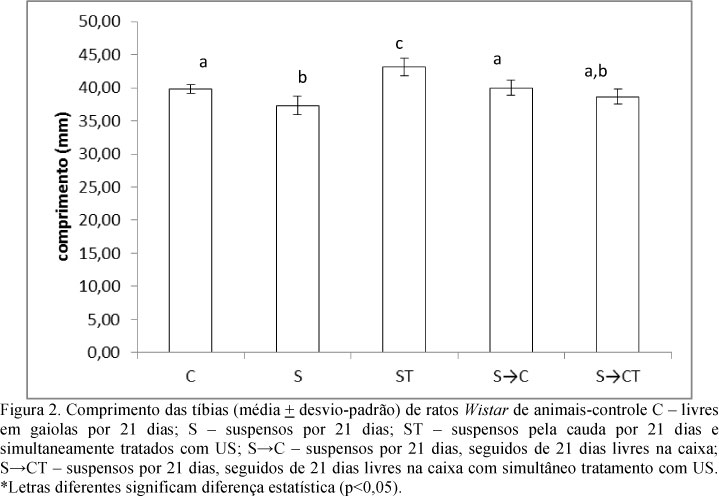This work intended to verify if the low power ultrasound (US) prevents the occurrence of osteopenia on the tibia of rats under the absence of load. 45 adult male Wistar Rattus novergicus albinus were used, separated in five equal groups: C - control free animals in cages for 21 days; S - animals suspended by the tail for 21 days; ST - animals suspended by the tail for 21 days and concurrently treated with US; S→C - animals suspended for 21 days and then free in cages for another 21 days; S→CT - animals suspended for 21 days and then free in cages for another 21 days and concurrently treated with US. The treatment was performed with US with 1.5 MHz, work cycle 1:4, 30 mW/cm², on tibia, for 15 sessions of 20 minutes each, 5 sessions per week. While still alive, the animals underwent bone densitometry examination to verify the Bone Mineral Density (BMD) and the Bone Mineral Content (BMC). After the euthanasia of the animals, the tibias were disjointed, dissected and underwent destructive mechanical testing for the analysis of the maximum force (Fmax) and Rigidity (R). The length (L) and the diameter (D) of the middle point of the tibia were also measured. In group S, BMD, BMC, Fmax, R, L and D were smaller than in group C, demonstrating that the suspension by the tail is detrimental to these variables. The treatment of the suspended animals with the US, in group ST, increased the BMD and BMC compared to group S, leveling them to group C. The Fmax, R and L of group ST increased compared to group S and compared to group C as well (p<0.05). No significant difference was found between the measured variables for the groups S→CT and S→C (p>0.05). The results obtained in this study lead to the conclusion that the low power US contributes to the prevention of the occurrence of osteopenia on animals under suspension by the tail, showing that the absence of the mechanical stimulation caused by the impossibility of deambulation can be minimized by its action.
physical stimulation; osteopenia; osteoporosis; prevention; ultrasound



